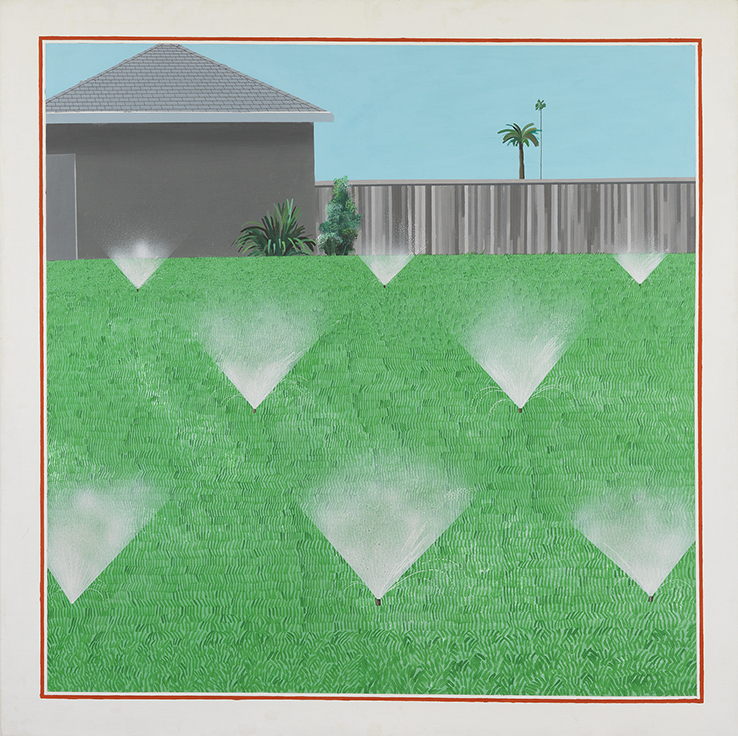The artist does that in several of his compositions. This choice is made frequently enough for his body of work to be easily divided into paintings with people in them and those which are without human figures.
Hockney is known for several different styles, including Pop Art. In his own work, he uses modern technology to produce beauty. Perhaps this particular element of creating a lush, green lawn drew him to Lawn Being Sprinkled.
His focus is as much on the automation producing the verdant area as the expanse of space. It seems to remind the viewer that without mechanical interference, this space would be a little harder to create.
Lawn Being Sprinkled brings one particular element of the process of creating a green space into focus. The viewer is drawn to water. Inverted triangles of water spread out evenly across a lush green lawn. None of the jets compete for attention.
Instead, they all work in unison to produce the sweep of colour that takes up most of the painting. The viewer is encouraged to think of nothing else but the act of the lawn being sprinkled.
David Hockney is one of the most famous living English painters and also has a background as a print maker. This can be seen in his approach to Lawn Being Sprinkled. The inverted triangles of water are arranged in a regular pattern which is reminiscent of work created with the use of a stencil.
This type of repetition is also an element seen in Pop Art, where photocopiers and other modern media are used to create images.
As an essential part of the pop craftsmanship development of the 1960s, he is viewed as a standout artist who who has every now and again, changed his style and methods for work. While this piece may not have the wild energy of some of Hockney’s fauvist landscapes, it serves as a reminder of the security to be found in repeated, everyday events that add beauty to life.


